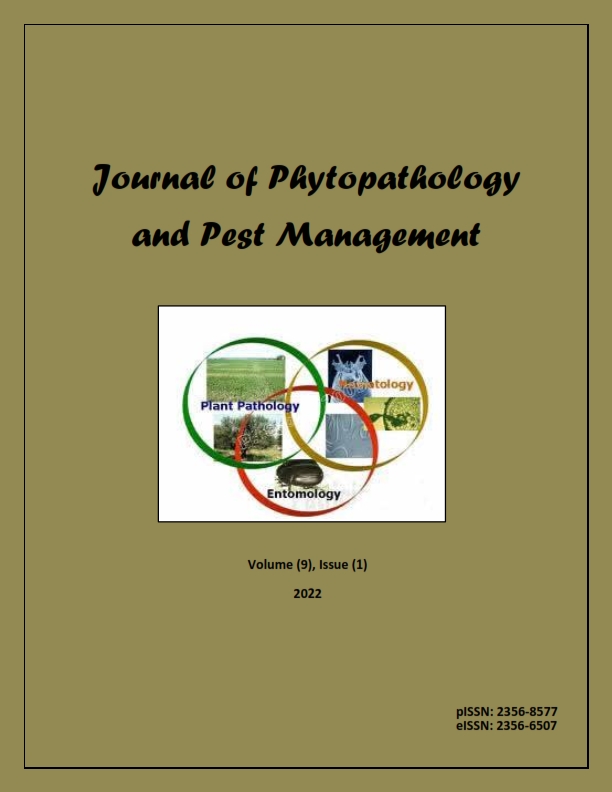Chia charcoal rot disease and its management using certain bio-agents in Egypt
DOI :
https://doi.org/10.5281/zenodo.10077764Mots-clés :
chia, charcoal rot, Macrophomina phaseolina, Trichoderma asperellum, Streptomyces rocheiRésumé
The current study was performed to control the charcoal stem rot disease caused by Macrophomina phaseolina in chia plants (Salvia hispanica L.). Macrophomina phaseolina was morphologically identified as the causal pathogen of charcoal stem rot on naturally infected chia plants showing typical symptoms of disease and obtained from Fayoum, Giza, and Menoufia governorates, Egypt in the 2021 cultivation season. Additionally, the molecular characterization of the causal pathogen revealed 99.65-100% identity with several isolates of the same species. The isolates obtained from all governorates under study resulted in pre- and post-emergence damping-off with significant variations. However, M. phaseolina isolated from Fayoum governorate recorded the highest percentage of charcoal stem rot. Moreover, the filtrate of the same isolate caused the highest percentages of wilted seedlings. The presence of yeast, amonium chloride and urea as nitrogen sources resulted in the loss of M. phaseolina mycelial color. The pigmented isolate of M. phaseolina (Fayoum isolate) exhibited a high virulence to chia plants in greenhouse compared to the non-pigmented one. The two bio-agents; Trichoderma asperellum and Streptomyces rochei, isolated from the rhizosphere soil of healthy chia plants, significantly inhibited M. phaseolina fungal growth in comparison with the control in vitro. In greenhouse experiment, the fungicide Tricyclazole was the most efficient application for reducing the incidence of disease as well as increasing the plant growth measurements, i.e., number of spikes per plant, number of branches and plant height, followed by the biocide New-Actino. The combined use of the bio-agents T. asperellum and S. rochei was greatly efficient in both decreasing the disease incidence and improving the plant growth parameters compared to individual use of each. The current study indicated the potential use of the biocide New-Actino, T. asperellum and S. rochei as fungicidal alternatives for controlling chia charcoal rot disease.
Métriques
Téléchargements
Publiée
Comment citer
Numéro
Rubrique
Licence
(c) Tous droits réservés Journal of Phytopathology and Disease Management 2022

Ce travail est disponible sous licence Creative Commons Attribution - Pas d’Utilisation Commerciale 4.0 International.
Click here for more information on Licensing policy

.png)




